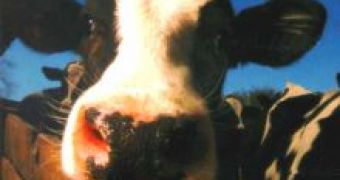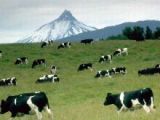Scientists from Australia and New Zealand are planning a large agricultural experiment that has the goal of determining the genetic and environmental factors that most contribute to a highly productive cow - a cow that not only better converts food into milk but also has a lower methane emissions metabolism and is resistant to various diseases. They plan to furthermore select the best cows in order to create a new breed of highly efficient cows as well as to discover the genes responsible for the beneficial traits and the best environmental conditions for raising a cow.
The entire project is a private-government partnership which will cost $4 million and will consist of various feeding trials over a period of three years. The experiment will involve more than 2 000 cows. "The target of the proposal is definitively to understand if there are significant genetic differences in the metabolic conversion efficiency between cows fed in a very similar manner," said Dr Suzanne Bertrand, the innovation manager of Livestock Improvement Corporation, one of the firms involved in this experiment.
After finding the dairy cows which most efficiently convert feed to milk, researchers plan to identify the genetic markers for that capability and then to genetically select the most efficient cows. This is expected to lead to significant gains in productivity. According to Dr Bertrand, they plan not only to identify the beneficial traits but also to enhance them through selective breeding. Insofar they don't plan to actually genetically engineer a cow.
Moreover, the scientists will also study how genetically similar herds perform in different environments, which will allow them to understand the sensitivity of specific breeds to environmental factors such as temperature and oxygen. This is expected to lead to valuable recommendations for the farmers.
Researchers want to be able to distinguish between the effects of genetics and those of the environment. The bovine genome has been recently sequenced and this will make possible to spot the actual genes responsible for various traits such as the milk production efficiency, fertility and disease resistance. "A study such as this one needs a large herd to understand the genetic background of the effect," said Dr Bertrand.
The Australian researchers are keen on identifying the various signals received by the cow and which in turn influence the chemical composition of milk (fats, proteins and bioactives). Besides the Australian corporations and government, the project also involves many New Zealand researchers that have previously worked on reducing methane emissions from livestock - which is believed to be a major contributor to global warming (second to CO2 emissions).
Australia and New Zealand have the most efficient agricultures in the world and, unlike the US or the EU, have no farm subsidies. According to many economic analysts, the high efficiency of Australia's and New Zealand's agricultures is in fact the direct result of the 1980s subsidies cuts. "They [the farmers in New Zealand] survived the subsidy cuts by slashing their own spending, purchasing only essentials, and implementing more efficient methods," writes Sara J. Fitzgerald, a trade policy analyst in the Center for International Trade and Economics at The Heritage Foundation. "Without subsidies, they began to operate on the basis of market demand. ... The market encouraged Australian farmers to diversify according to their comparative advantage, not to produce according to the receipt of a government check. They expanded beyond wheat, beef, and wool into increased production of products and varieties more suited to Australian conditions."
And what happens now is a natural continuation of this development - not only choosing the animals best adapted to the local conditions, but also scientifically designing them to be even better adapted and productive.

 14 DAY TRIAL //
14 DAY TRIAL // 
